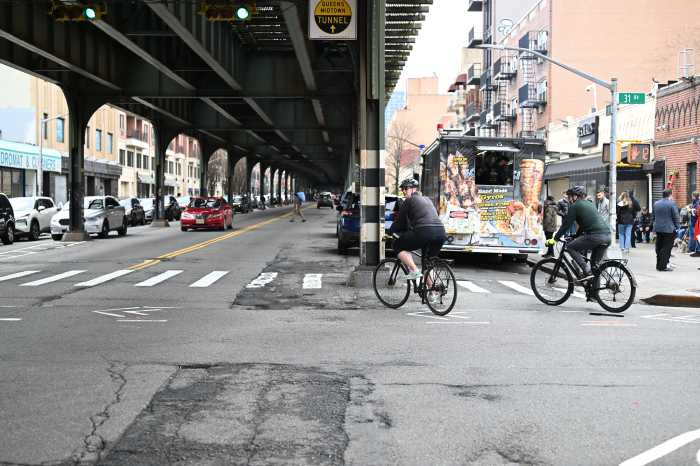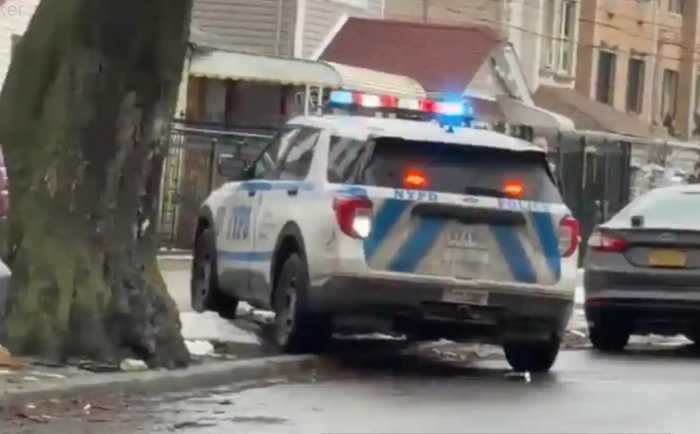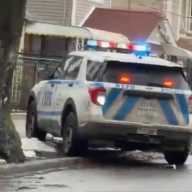By Gabriel Rom
Eddie Valentine is exasperated.
In 2011, the former chief of the Rockaway Point Volunteer Fire Department wanted upgrades for his station: two dozen emergency pagers, a cascade system that would allow his men to refill their oxygen tanks and a water pump to alleviate plumbing problems.
Valentine took notice of a new and relatively unknown city program called Participatory Budgeting (PB). The program, which originated in Brazil in 1989, involves residents brainstorming on spending ideas, helping to allocate at least $1 million of their Council member’s capital budget funds. With the help of numerous committees, community volunteers develop proposals based on these ideas and residents vote on them. City agencies then vet projects and give cost estimates.
For Valentine, that’s where the trouble began.
He attended workshop meetings and campaigned for his upgrades, getting them on the inaugural PB ballot in Councilman Eric Ulrich’s (R-Ozone Park) district, the first in Queens to adopt the PB program. Valentine’s projects won, receiving a total of 2,444 votes and securing $147,000 from the city. But suddenly the projects were denied by the city, deemed ineligible because his fire department was considered a “non-city capital project.” That classification meant the volunteer department was subject to a host of regulations, like a minimum of one full-time paid employee, years of audited financial reports and non-profit registration documents.
All of this was news to Valentine. It was the first time he had heard the phrase “non-city capital project.”
“This all came as a total surprise,” an angry Valentine said.
That same year, six miles east of Valentine’s department, the Knights of Columbus Rockaway Council won $45,000 in PB money to make a bathroom in the building handicap accessible. Just as in Valentine’s case, the project was vetted, the votes counted, the money supposedly allocated and then it was ultimately denied by the city for being a “non-city capital project.”
How had almost $200,000 in discretionary funding been allocated to projects that should never have made the ballot in the first place?
Participatory Budgeting was first introduced to New York in the fall of 2011 and the pitch was as simple as it was bold: “How would you spend $1 million to improve your neighborhood?”
The City Council called it “revolutionary,” and Queens residents saw it as an opportunity to engage with the nuts and bolts of city politics. As of 2016, 10 of Queens’ 14 Council members will have adopted the program.
But even as Participatory Budgeting has been rolled out across the borough, some of those involved in Ulrich’s district have soured on the process. Despite considerable support and initial enthusiasm, satisfaction with the program has waned.
Through interviews with participants, a picture emerges of a complex and time-laden process that has its heart in the right place, but struggles with many of the same problems that afflict city politics in general: bureaucracy, poor communication and interagency squabbling.
“On one hand, this is a fantastic opportunity to get civic involvement and I’ve seen people who weren’t engaged who are now engaged,” said Peter Beadle, a former budget delegate and committee facilitator from Forest Hills.
“On the other hand, we are sheltered from the bureaucracy that our lawmakers have to deal with.”
A TimesLedger analysis found that since 2012, 23 percent of Queens’ Participatory Budget projects have been completed with more than $7 million still tied up in incomplete projects.
Out of 35 projects in Ulrich’s district, seven have been completed–six of which are school projects. The completed school upgrades include over $600,000 for technology and safety updates.
Of the 28 non-completed projects in Ulrich’s district, two are under construction, while the rest are in earlier stages.
LABS OF DEMOCRACY
Robby Schwach, a legislative aide to Ulrich, describes the problems with the 2011 projects as initial hiccups.
“It’s safe to say that we weren’t aware of those regulations or didn’t provide that information at the outset,” said Schwach, who wasn’t part of Ulrich’s staff at the time.
Schwach now gives out an extensive handbook to participants that outlines eligibility requirements for projects.
“Whether it was a lack of having a full understanding of the process, or we just weren’t given the right information, we have learned our lessons: We’re less likely to push a non-city capital project,” he added.
But for some, that’s the wrong lesson.
In the first years of the Ulrich program Ed Wendell, Vance Barbour and Alexander Blenkinsopp, all senior members of the Woodhaven Residents Block Association, were enthusiastic.
“The whole idea for PB, the way the city was selling it, was to stir up creative juices, to listen to people and to come up with innovative and new ideas,” Wendell said.
Barbour described early brainstorming sessions as small labs of democracy. Regardless of the time of day, he said at least 40 people would show up and the atmosphere would be electric with team members laughing, arguing and proposing new ideas.
“This was real community engagement and real outside-of-the-box thinking,” he said. “People were using their imagination to see what they could do.”
A PROBLEM OF EXPECTATIONS
It was precisely those “non-city capital projects” like flower boxes or community board notice signs that got participants excited. But the process of turning these rough, sometimes outlandish ideas, into formal proposals proved to be difficult. Many projects were summarily rejected by city agencies, often without explanation, according to Barbour.
“When it came to finding out what we could do, we couldn’t find a single city agency with a flashlight,” he said. “Nothing outside of a very small square box ever made the list.”
The city, he said, tended to approve basic upkeep projects such as roadway resurfacings, sidewalk extensions, median repavings and bus countdown clocks.
For Schwach, the basic projects are largely the point of PB.
“This is a way for us to prioritize projects that the community thinks are important,” he said.
But a number of the smaller projects have been hit with delays.
A $200,000 library vending machine in Breezy Point has been put on pause after an agreement in principal fell through soon after Hurricane Sandy, according to Joanne King, director of communications for the Queens Library, while a $100,000 median resurfacing project that was listed as having an “agency feasibility issue” seems to have fallen into a black hole between city agencies.
DOT, originally tasked with carrying out the resurfacing, requested that the Parks Department implement it. According to a Parks spokeswoman, the money has yet to be transferred to the agency and there is no projected completion date. According to Schwach, he has been out to the site with Parks and community members and preliminary discussions are taking place.
ONLY SEVEN
PROJECTS DONE
As many of PB’s early adopters struggle to point to concrete successes, a number of projects have been bundled into larger, non-PB projects by city agencies.
One such project is a $100,000 renovation for a meeting room at the Queens Library at Richmond Hill. The renovation, though, could not be completed separately from a larger $6.5 million reconstruction project for a full building renovation. That project, which has been under discussion for “at least four or five years,” according to King, is still in its planning phase, with no projected completion date.
“It seems to me that we might have had people voting on projects that were going to be funded anyway,” Blenkinsopp said. “Either people were wasting their time or we were wasting a valuable opportunity to push another project to the front of the line.”
King said the bundling technique is used to save money and avoid unnecessary disruptions. She was unable to say whether participants had been made aware of the outstanding renovations at voting time.
She pointed out that the program is evolving each year, with city agencies focusing on increasing communication with voters and delegates.
“I think this year there is a lot more education for the committees putting projects up for ballot,” she said. The library system is working more closely with the Council members to frame projects. But it’s unrealistic to assume that if you vote on a Tuesday a project will get done on Thursday.”
Yet with only rough projected completion dates on what many consider basic projects, PB is beginning to lose followers in Central Queens.
Citywide, in 2014 fewer than half of those who signed up to be delegates at the beginning of the process ended up serving actively through the delegate phase, even as the number of participants has grown yearly, according to a report put out by the Urban Justice Center.
“PB opened my eyes,” said Toby Sheppard Bloch, a member of Community Board 5 and an early proponent of the program. “I’ve started to take voices critical of city bureaucracy more seriously. I think it’s fundamentally disrespectful to have such a poor record of follow-through.”
Only a single non-school project has been completed in Ulrich’s district since he adopted PB four years ago.
“We still don’t have any material to show to people what has been accomplished through PB,” said Wendell, a member of the WRBA. “There is nothing for us to hang our hat on. You need to be able to tell people: Look, we won, and we don’t have anything like that. If we don’t see things soon, it’s going to be very hard come next fall to get people interested in PB.”
EN ROUTE TO SUCCESS
Eddy Pastore, a Far Rockaway activist, hoped to build an entertainment stage. He secured $200,000 in PB funds for the stage which proved not to be enough. In an example of the flexibility of the process, Pastore combined $150,000 from a gazebo project the year before and put it towards the stage. When combined with additional resources from Borough President Melinda Katz’ office, the money turned out to be sufficient and the project is currently in its design phase.
“I think PB does really work,” Pastore said. It’s a great way to get people more involved.”
“I’ve seen great benefits,” he added “but it becomes a little confusing with all the red tape to get projects done.”
Susan Brustmann, director of the Poppenhusen Institute which received $250,000 in PB money from Councilman Paul Vallone (D-Bayside) in 2013, is also sanguine.
“We know the wheels of bureaucracy move slowly,” she said. “As a rule, capital projects take time and that’s not unusual. Have you ever lived in New York?”
Reach reporter Gabriel Rom by e-mail at grom@



































